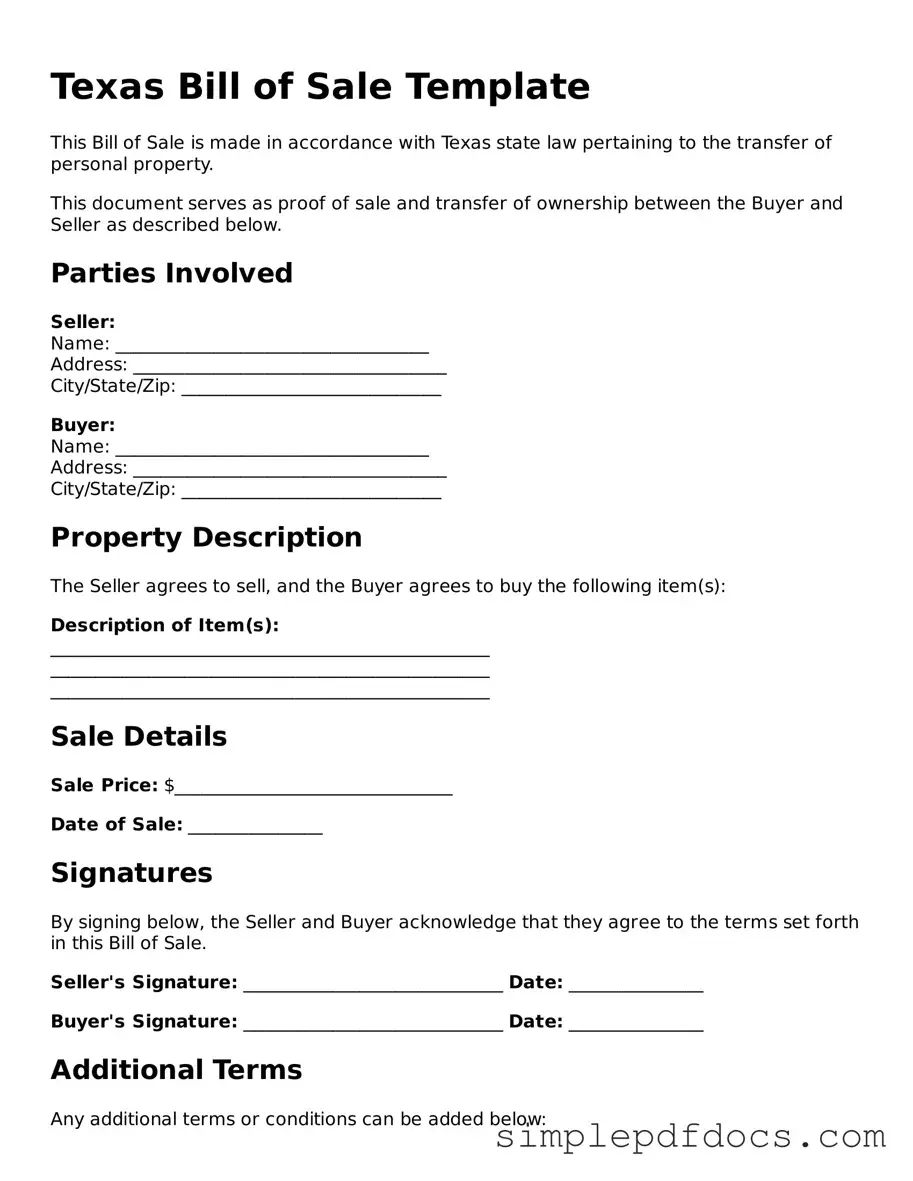Legal Bill of Sale Document for the State of Texas
A Texas Bill of Sale form is a legal document that records the transfer of ownership of personal property from one party to another. This form serves as proof of the transaction, detailing the specifics of the item being sold and the terms agreed upon by both the buyer and the seller. Understanding this document is essential for ensuring a smooth and legally binding exchange in Texas.
Get Document Here
